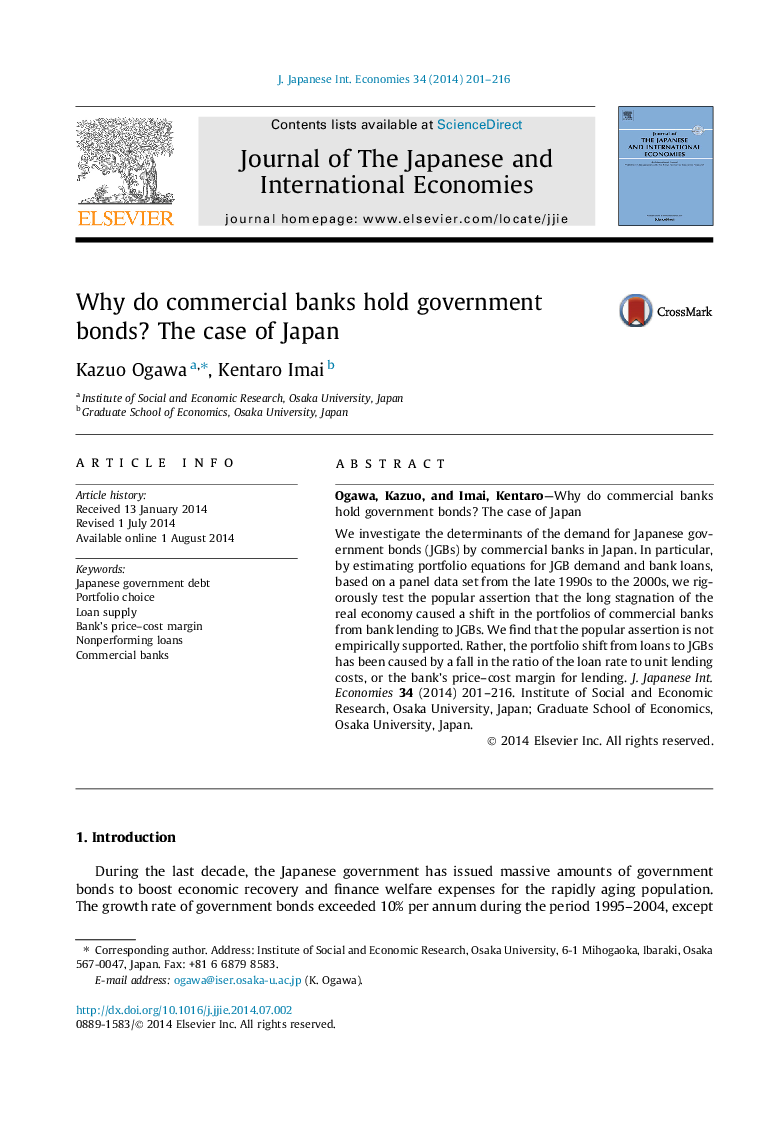| Article ID | Journal | Published Year | Pages | File Type |
|---|---|---|---|---|
| 964491 | Journal of the Japanese and International Economies | 2014 | 16 Pages |
•We investigate the determinants of demand for Japanese government bonds (JGBs) by commercial banks.•The portfolio shift from loans to JGBs was not caused by the long-term stagnation of the Japanese economy.•A fall of the ratio of bank lending rates to unit lending costs is responsible for the portfolio shift from loans to JGBs.•Lending has become more costly, depriving commercial banks of the incentive to lend.
We investigate the determinants of the demand for Japanese government bonds (JGBs) by commercial banks in Japan. In particular, by estimating portfolio equations for JGB demand and bank loans, based on a panel data set from the late 1990s to the 2000s, we rigorously test the popular assertion that the long stagnation of the real economy caused a shift in the portfolios of commercial banks from bank lending to JGBs. We find that the popular assertion is not empirically supported. Rather, the portfolio shift from loans to JGBs has been caused by a fall in the ratio of the loan rate to unit lending costs, or the bank’s price–cost margin for lending.
